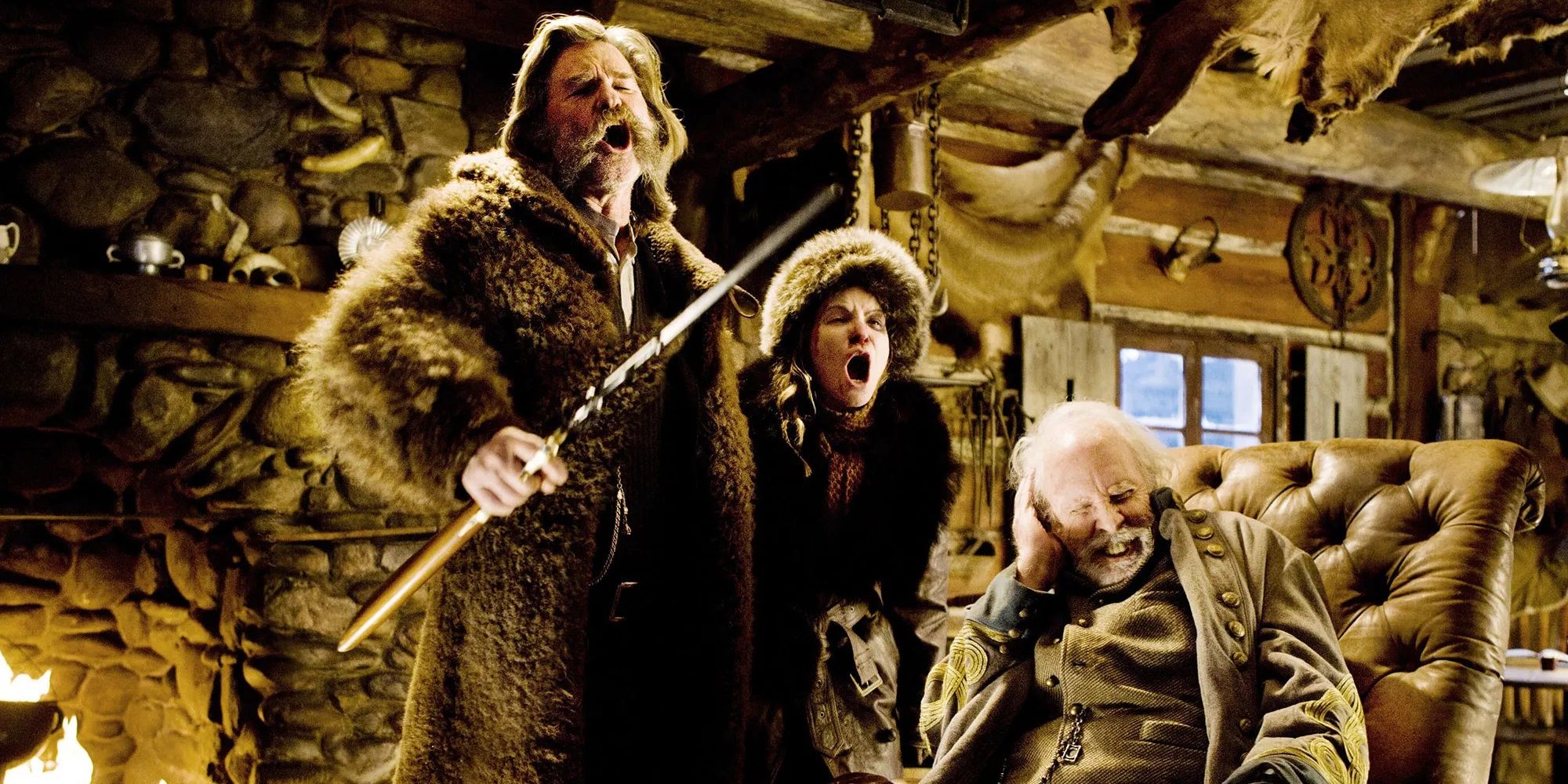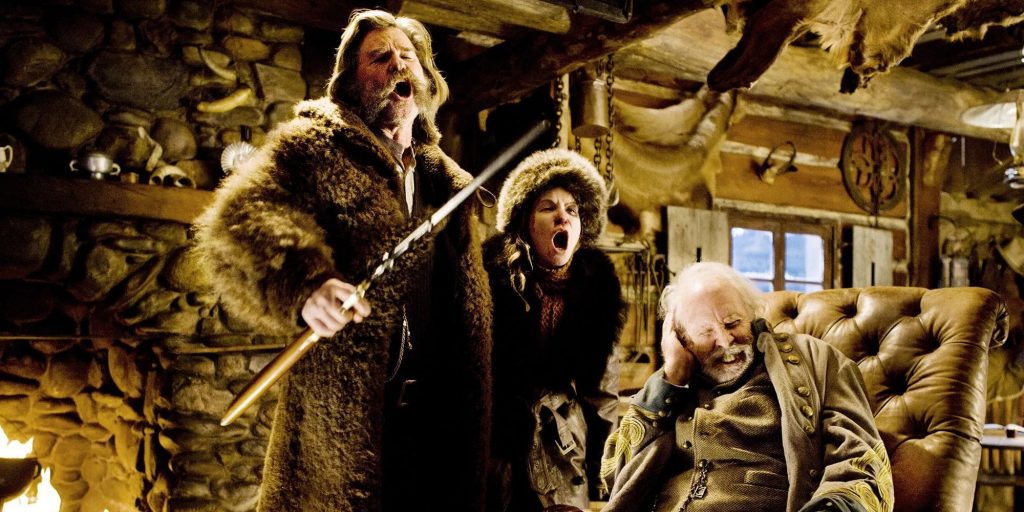
In a recent appearance on The Joe Rogan Experience, Quentin Tarantino named The Hateful Eight as one of the highlights of his career: “A lot of the critics that like me didn’t like Hateful Eight and it all came down to the fact that it was just too rough a vision for them. It was too cynical. It was too cruel. That’s one of my favorite movies, ‘cause I feel like, ‘Wow, that’s the Sam Peckinpah movie I always wanted to make!’” After Django Unchained framed the brutality of American slavery as a Sergio Corbucci spaghetti western, The Hateful Eight took a broader look at inhumanity.
Tarantino told Rogan, “The idea is, there’s no good guys in the movie; they’re all f***ers.” What makes The Hateful Eight unique is that it has no discernible protagonists. The audience isn’t necessarily supposed to root for any of the characters that get snowed into Minnie’s Haberdashery, except maybe that some of the less evil ones might meet a grim fate at the hands of their much meaner cohorts. But that wasn’t always the idea.
RELATED: Quentin Tarantino Should Finally Tackle One Of These Two Genres In His Final Movie
When Tarantino first had the notion to trap a bunch of gunslingers in a haberdashery and gradually unfold their backstories, he began writing the story as a sequel novel to what was then his most recent film, Django Unchained. Titled Django in White Hell, the novel essentially told exactly the same story as The Hateful Eight, except one of the lead roles – presumably Major Warren, the bounty hunter followed from the very beginning – was filled by Django Freeman.
While a sequel novel to Django Unchained is a tantalizing thought (and something Tarantino should reconsider now that he’s officially a novelist), the Django character ultimately didn’t fit into The Hateful Eight’s story. As the plot stalled with Django in the haberdashery among the pure evil of Daisy Domergue and the rest of the Domingre Gang, he had a creative epiphany: “I literally say to myself, ‘You know what’s wrong with this piece? Django. Django’s got to go.’” This helped Tarantino arrive at the unique core of The Hateful Eight’s premise: “This piece shouldn’t have a moral center. It shouldn’t have a hero.”
The Hateful Eight is a callback to a very specific type of episode from classic western TV shows like Bonanza and The Virginian. Due to the restrictions of TV budgets, the powers that be devised the concept of the “bottle episode,” an episode that takes place mostly (or entirely) in a single location to cut down on production costs. According to Tarantino, “Twice per season, those shows would have an episode where a bunch of outlaws would take the lead characters hostage. They would come to the Ponderosa and hold everybody hostage, or go to Judge Garth’s place – Lee J. Cobb played him – in The Virginian and take hostages. There would be a guest star like David Carradine, Darren McGavin, Claude Akins, Robert Culp, Charles Bronson, or James Coburn… you would pass halfway through the show to find out if they were good or bad guys, and they all had a past that was revealed.”
In addition to being a neat reworking of these classic bottle episodes, the claustrophobic single-location storytelling of The Hateful Eight recalls Tarantino’s debut feature, Reservoir Dogs. After breaking out with a taut, tense, pared-down crime thriller, Tarantino went on a seven-movie journey through the genre sandbox and came full circle with a big, extravagant revisionist western take on the Reservoir Dogs concept.
The problem with shows like Bonanza and The Virginian is that they have recurring heroes that the audience tunes in to see every week. So, when a gun-toting guest star would start running amok, the heroes would nobly step up to stop them. Tarantino’s subversion on this premise was to eradicate those heroes. Everybody in the room is the kind of dark, brooding, mysterious villain that a gruff Virginian guest star would play. “I thought, ‘What if I did a movie starring nothing but those characters? No heroes, no Michael Landons. Just a bunch of nefarious guys in a room, all telling backstories that may or may not be true. Trap those guys together in a room with a blizzard outside, give them guns, and see what happens.” Unfortunately, that meant getting rid of Django.
Exploring Django and Broomhilda’s adventures after escaping from Candyland does sound like a great idea for a novel, or even a series of novels. There have also been reports for a while about a movie based on the Django/Zorro crossover comic, which could be really cool. But, ultimately, cutting Django out of The Hateful Eight was the right choice for that story. Django’s good heart and heroic instincts would force him to bring peace and order to a story that needed to indulge in chaos and lawlessness.
MORE: Quentin Tarantino Already Made The Perfect Final Movie
